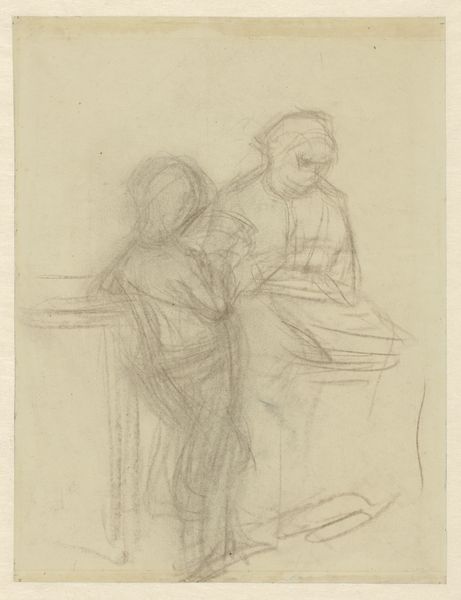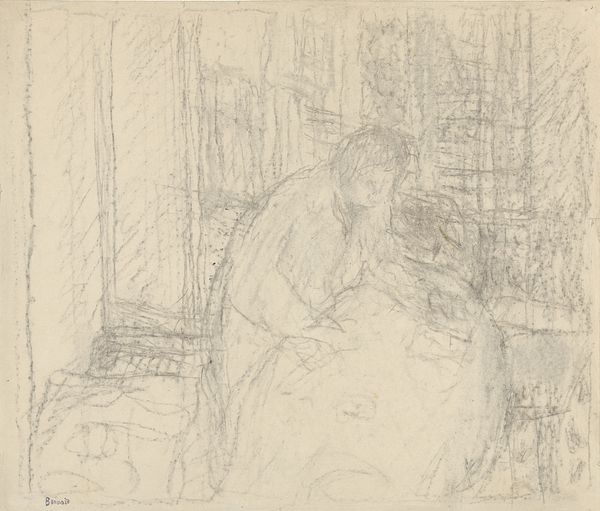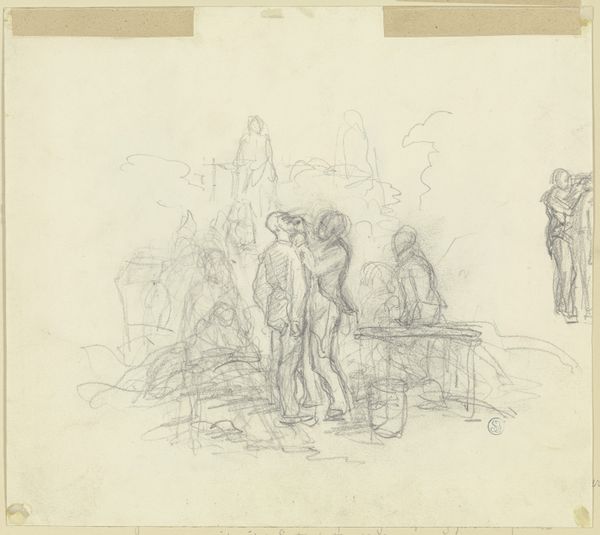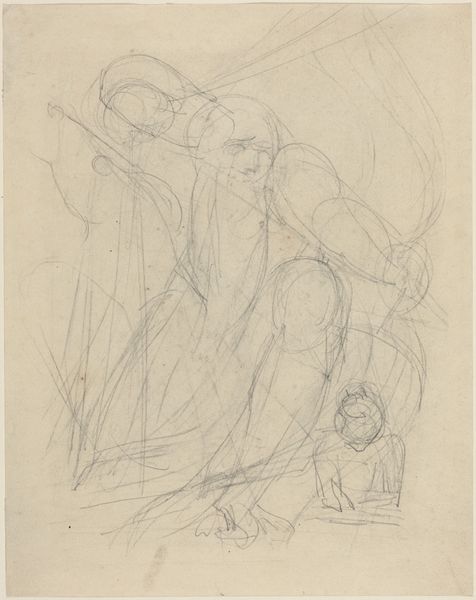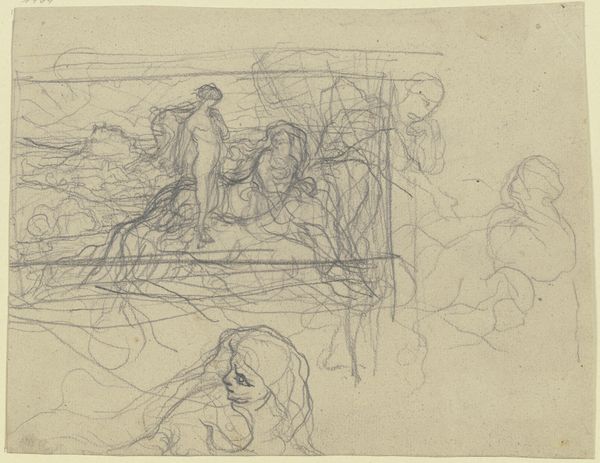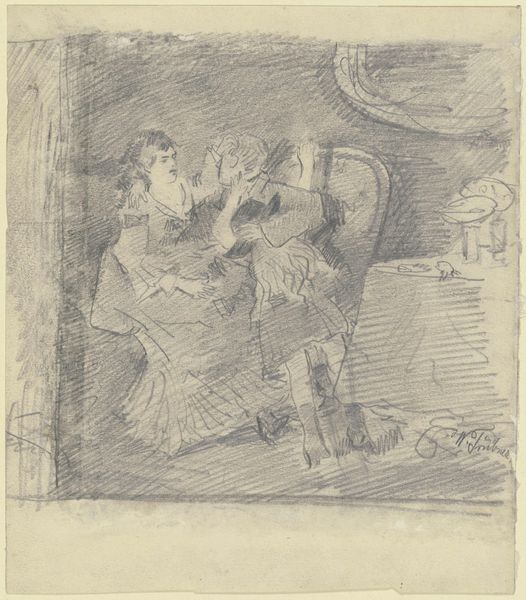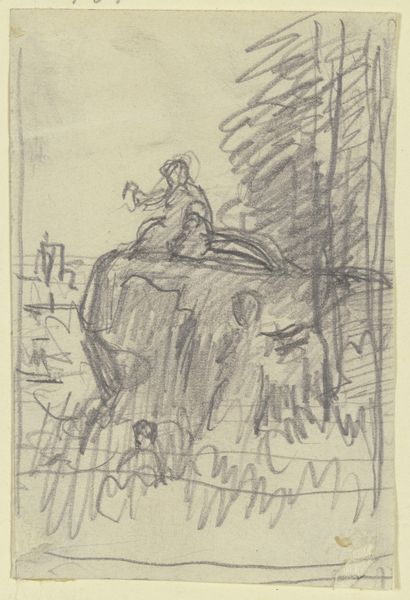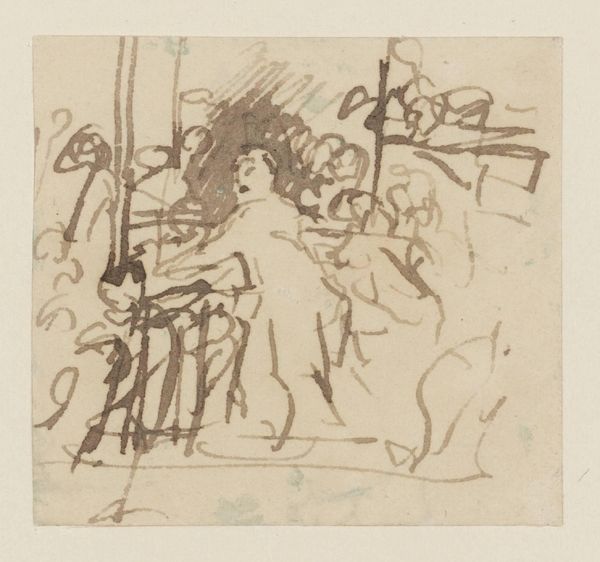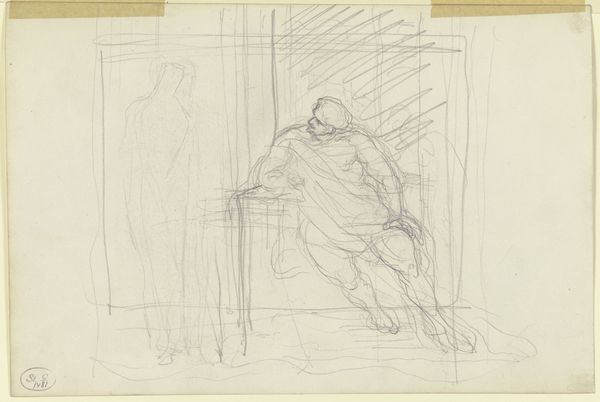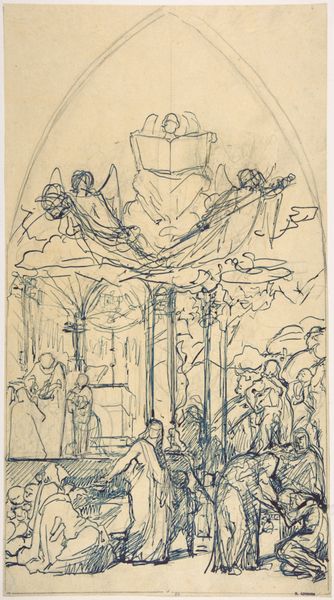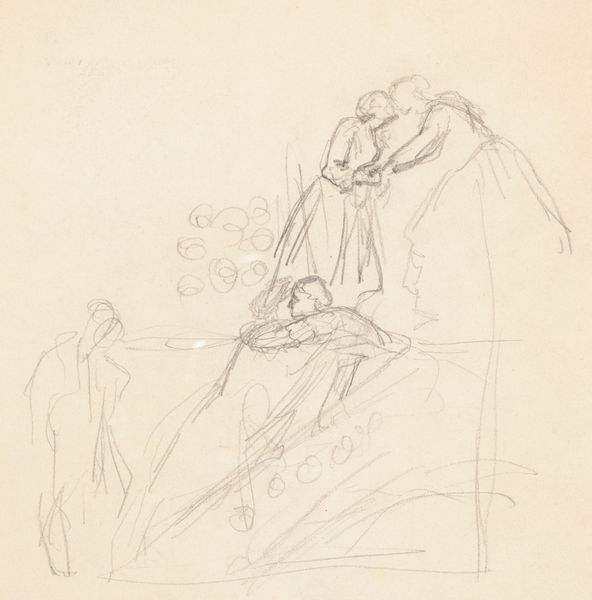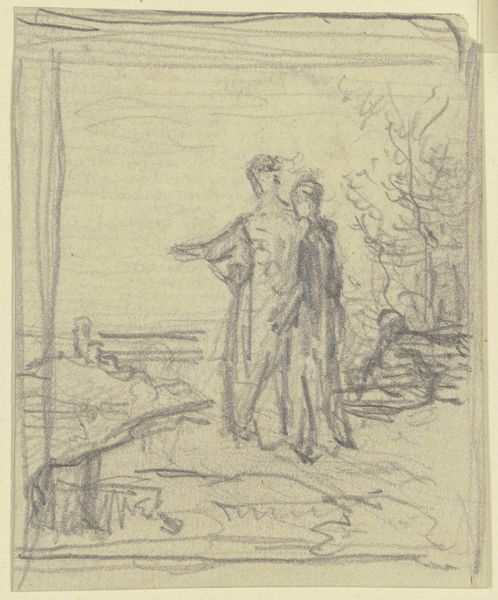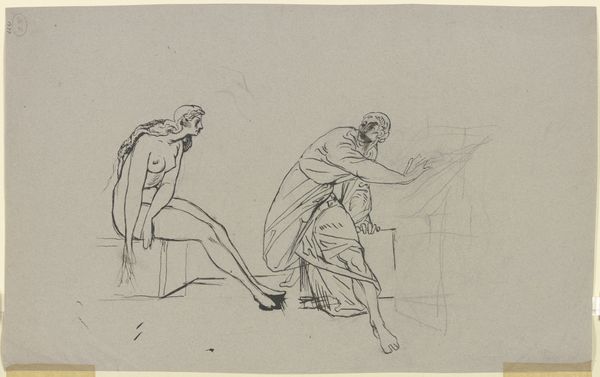
Ritter Hartmut von Kronberg bei dem Reformator Oecolampadius in Basel c. 1866 - 1867
0:00
0:00
Copyright: Public Domain
Editor: This is Victor Müller's drawing, "Ritter Hartmut von Kronberg bei dem Reformator Oecolampadius in Basel," created around 1866 or 1867. It’s done in pencil and ink on paper. I'm immediately struck by the almost ghostly quality of the figures. The lines are so light, it feels like a memory more than a depiction. What pulls you in when you look at this piece? Curator: It whispers secrets, doesn't it? Like eavesdropping on a pivotal moment in history, only the story's half-remembered. To me, it's a fantastic exploration of faith, power, and the very human act of wrestling with beliefs. Notice how Hartmut, the knight, seems almost caged by his armor even though the lines depicting the figures are ephemeral. It hints at the constraints of his position, doesn't it? And Oecolampadius, frail but firm, holds his ground. What do you think about that architectural background seeming both present and dissolving? Editor: That tension is great. It’s like the solid reality of Basel is fading as this debate intensifies! But is that third figure? Curator: Ah, a spectral witness. I imagine them as the silent observer, the embodiment of public opinion, maybe? Müller loves to toy with these ambiguities. Isn't it clever how he uses such delicate lines to suggest such monumental ideological clashes? It’s as if the Reformation itself is hanging in the balance, etched in the faintest of ink. Where do your eyes keep going back to? Editor: Definitely to the knight. He seems caught between worlds, like the old order is literally weighing him down. I guess I expected something a bit more... finished. Curator: But that’s its magic! It's unfinished *thoughts*. Art isn’t about conclusions; it’s about the messy, exhilarating, sometimes frustrating, process of questioning, much like the Reformation itself, really. Editor: Absolutely. This glimpse into Müller's process really reframes how I see the finished history painting he may have envisioned. Curator: Right? The ghostliness becomes a kind of truth. And that’s a beautiful thing, isn't it?
Comments
No comments
Be the first to comment and join the conversation on the ultimate creative platform.
